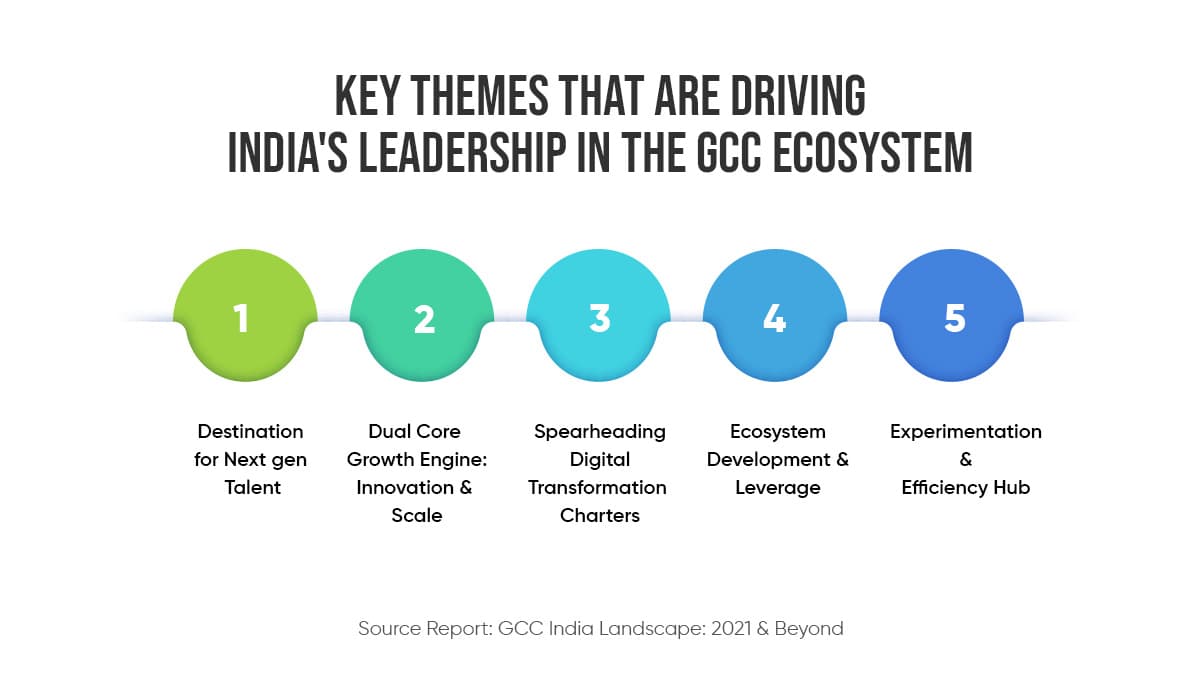Ever heard of Rakuten Pay? It’s Japan’s answer to Google Pay, a cashless, seamless platform revolutionizing payments. But here’s the twist: its success isn’t just thanks to the Rakuten Group in Japan. The real magic happens at Rakuten’s Global Capability Centre (GCC) in Bangalore. Picture this: a bustling team in Bangalore, crafting every detail of Rakuten Pay—from the sleek UX to the robust back-end, to the strategic roadmap. This GCC doesn’t just support; it innovates and manages the entire product.
Even as the IT services sector faces a slowdown, India’s GCCs are evolving from mere support centers to dynamic innovation hubs for the MNCs. And guess what? They’re hiring too! The Indian GCC ecosystem has transformed into a sandbox where global enterprises drive, develop, test, and explore new organizational transformation initiatives. It’s a testimony to the power of global collaboration and the untapped potential of Indian talent.
The market boom of GCCs – India has the edge


Imagine a bustling marketplace, not of goods and spices, but of innovation and strategy. This is the story of the GCCs in India, a silent revolution reshaping the landscape of the IT industry. Once a fledgling sector, GCCs have grown their share of India’s total IT exports from 18% in 2015 to an impressive 23% last year. India is now home to about 1,500-1,600 GCCs serving as the offshore powerhouse for multinational giants, handling critical operations such as technology, customer service, finance, and product development.
HSBC Global Research reveals a bullish trend. Since 2015, GCCs’ revenues have soared at a compound annual growth rate (CAGR) of 11%, outpacing the top five Indian IT companies, which have grown at 8%. The Indian GCC industry estimated at $40 billion, employing around 1.5 million, is projected to surge to $100 billion by 2030, employing more than 4.5 million people (Source: EY’s Future of GCCs India Report).
But why do global giants like Visa, Amazon, Wells Fargo, and American Express flock to India to establish their GCCs? The answer lies in the strategic depth and leadership capabilities found here. According to Deloitte, nearly 5,000 global leadership roles are currently anchored in Indian GCCs. And the momentum is not slowing down. In the next two years, India is set to welcome approximately 200 new GCCs. This narrative of growth isn’t just about numbers; it’s about the evolving role of India on the global stage.
Why smaller cities will fuel bigger growth for GCC?


Traditionally, metropolitan giants like Bangalore and Hyderabad have dominated the GCC landscape. However, the tide is turning. A recent report by ANSR, a Dallas (US) based business consulting company, predicts a 30-40% demand rise for smaller cities in the near term. Currently, out of India’s 1600 GCCs, 150 are located in Tier 2 cities, including crucial hubs like Ahmedabad, Mysuru, Vadodara, Coimbatore, Nashik, and Bhubaneswar. These cities offer a unique blend of cost efficiency, burgeoning talent pools, and improving infrastructure, making them attractive destinations for GCC expansion.
Consider the cost advantage- operational expenses in smaller cities are significantly lower, allowing GCCs to invest more in cutting-edge technologies and talent development. Additionally, these cities boast a growing base of skilled professionals, thanks to the proliferation of quality educational institutions. This influx of fresh talent, coupled with lower attrition rates compared to metro cities, creates a stable and sustainable workforce.
In other terms, the border was significantly less relevant in light of remote working. GCCs now don’t have to compromise on strategic benefits that small cities provide. They can reap the benefits of being in a small city even with better connectivity and efficient ways. All in all, what these stories suggest is that small cities may not just be playing a supporting role in the growing global narrative but are also poised to become its protagonists. They will drive innovation, nurture sustainable growth, and create a newer geography for the India GCC ecosystem.
The government on the other side has also been providing incentives, establishing Special Economic Zones (SEZs) with tax exemption and by doing policies for innovation and R&D in GCCs. Besides, India’s vibrant startup ecosystem and infrastructure development are also driving growth in various technology verticals which has led a significant number of GCCs to succeed.
How the future will pan out
With evolving competition and customer needs, GCCs need to rethink strategies to consistently deliver value across business, talent, and innovation. This requires GCCs to continually reinvent themselves through an undivided focus on performance improvement across the three Es. The first being Efficiency, where GCCs develop strategies to increase output with fewer resources and assets. The second is Effectiveness that involves consistently delivering accurate, high-quality, and streamlined business processes. And lastly, in Experience, GCCs invest in elevating the satisfaction of internal and external stakeholders.
The article was first published on CSM Blog Named: GCCs can script the future playbook of innovation
The post GCCs can script the future playbook of innovation appeared first on Daily Host News.








